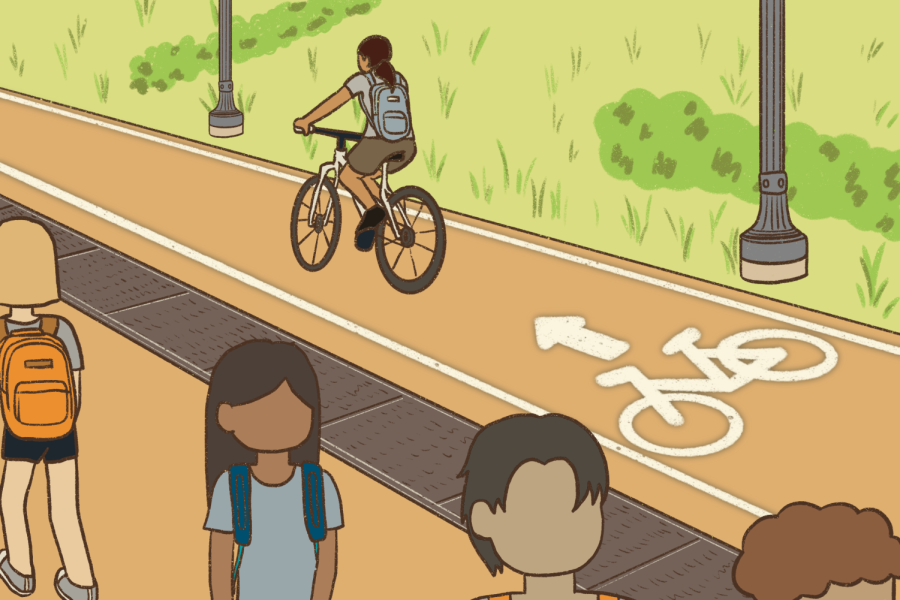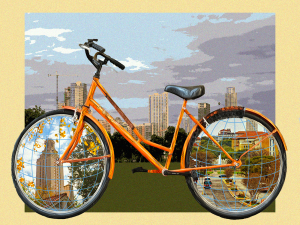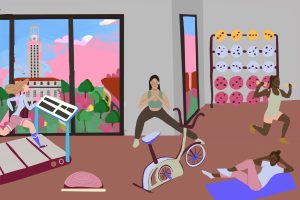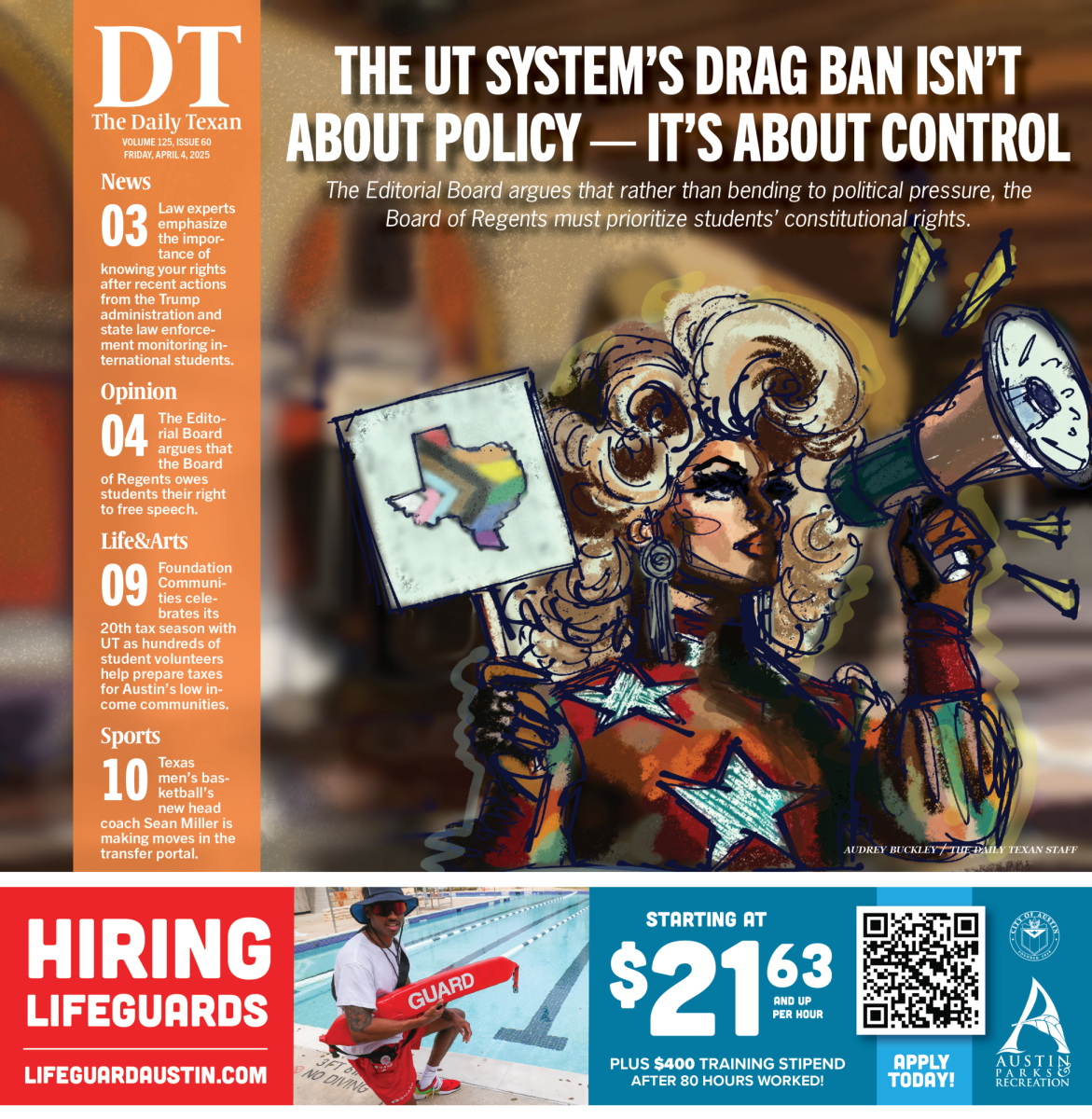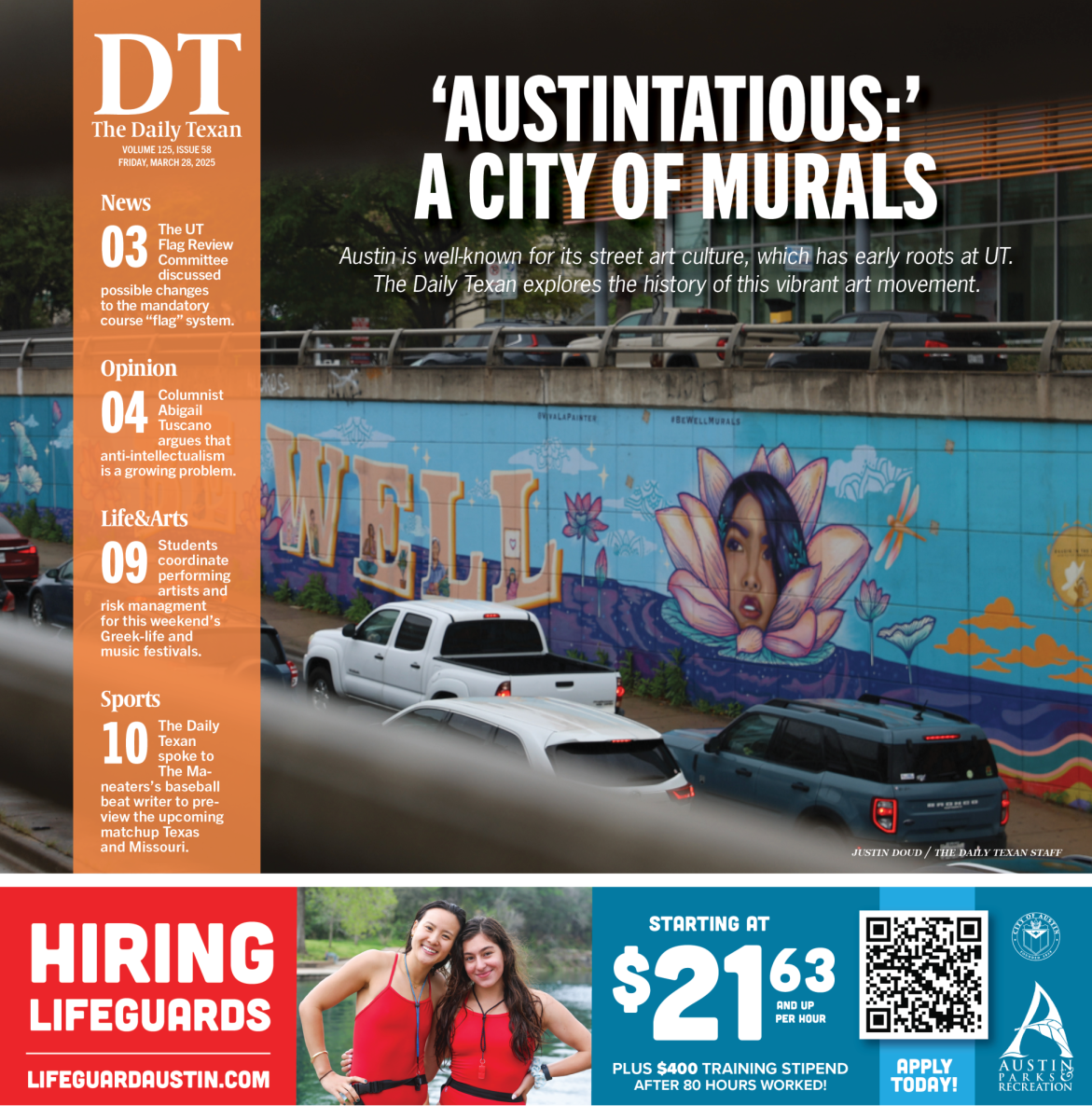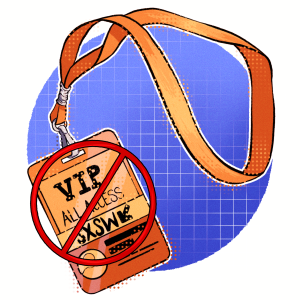Install Bike Lanes on Speedway
October 27, 2022
Since its completion in April 2018, Speedway Mall has served a vital role for students on the UT campus. Once a car-centric street, it now serves the student body as a pedestrian pathway for commuting between classes.
However, with the current design of Speedway, cyclists can pose a safety hazard to pedestrians as they pass through large crowds at high speeds. To help mitigate the risk of bike collision injuries, UT should install separate bike lanes on Speedway.
There are various possibilities for the design of Speedway bike lanes that could help address safety issues. One option is to place them on the west side of Speedway with one lane flowing north and the other south. The pedestrian pathway would remain separate from these lanes, allowing for both modes of transportation.
According to Blanca Gamez, director of UT Parking and Transportation Services, bike lanes could be counter-intuitive, as they would hinder pedestrian use of Speedway.
“From the beginning, the Speedway renovation was intended to be pedestrian-priority, and through discussion of various strategies for other modes of travel, the final selected approach accommodates bicyclists within the flow of pedestrian traffic,” Gamez said in an email. “This allows for both modes of transportation (walking and bicycling) to take place in a way that is safer for both pedestrians and bicyclists.”
While the current design of Speedway provides for both bicyclist and pedestrian transportation, it certainly does not do so safely.
“Bikes are definitely a danger for pedestrians, especially because Speedway is so crowded,” business sophomore Kevin Huang said. “Everybody is just walking, wherever they need to go without any structure which makes biking on Speedway very hard.”
What Speedway needs is organization, which bike lanes would offer. These lanes would not defeat the original purpose of Speedway; they would be an improvement to its design and safely provide for the needs of pedestrians and cyclists.
It’s understandable that some might question the efficacy of bike lanes because it’s uncertain whether students would actually use them. While some might be unwilling to adapt to the rules, UT could install barriers, such as flexible posts, which physically separate lanes rather than just painting lines on the ground. These barriers would create a more tangible boundary between the pedestrian pathway and bike lanes and could help discourage people from ignoring the lanes.
In its current state, Speedway offers a way for students to efficiently commute to classes by foot, but we still need safety provisions. Introducing separate bike lanes would help organize Speedway while ensuring the safety of students.
D’Eramo is a Plan II and international relations and global studies junior from Tyler, Texas.

